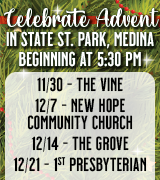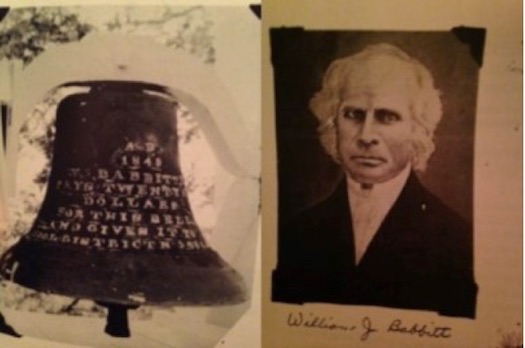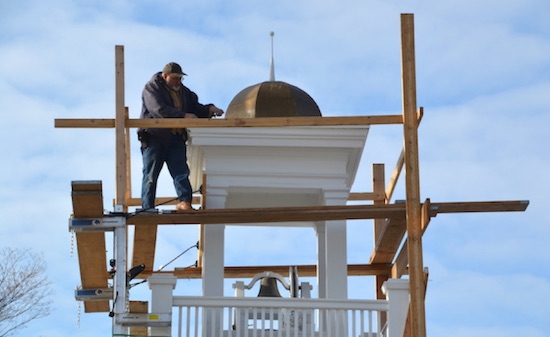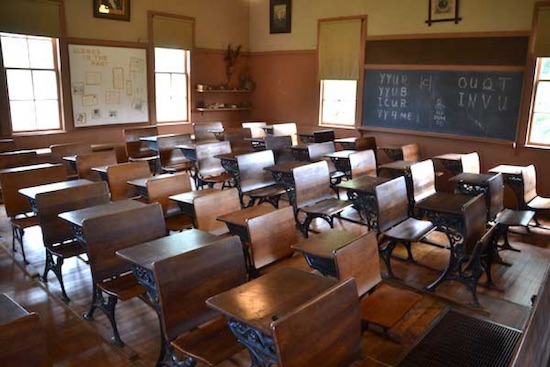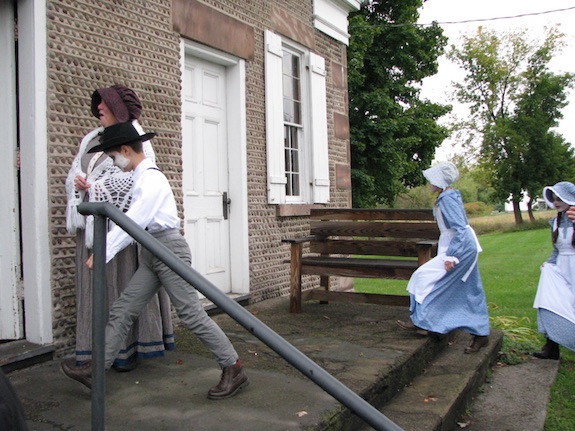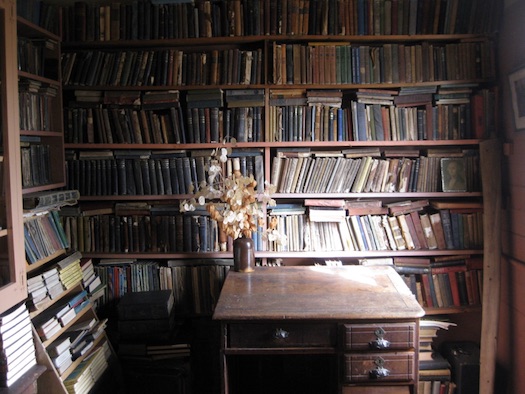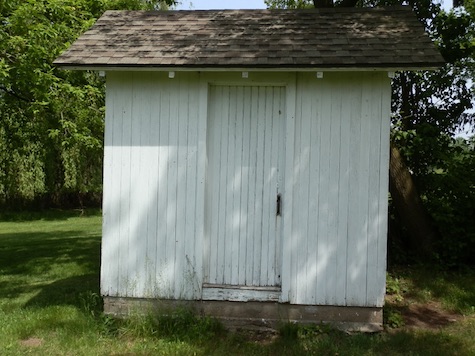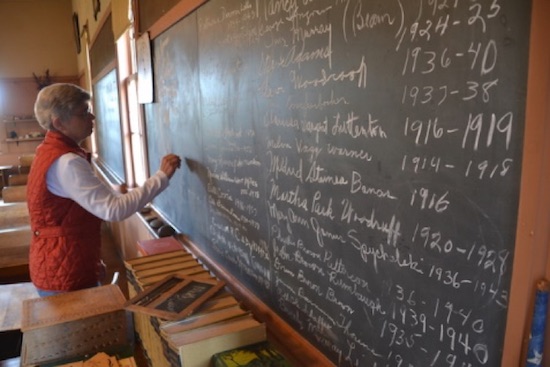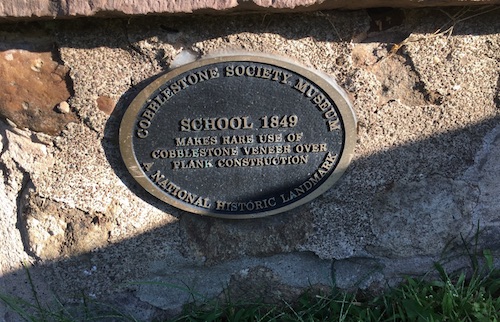Historic Childs: Schoolhouse shows different era for educating children
(Editor’s Note: This is the ninth article in a series about historic Childs in the Town of Gaines. The hamlet of Childs lies just north of Albion at the intersection of Routes 104 and 98. In 2019, Childs was selected to be on the Landmark Society of Western New York’s “Five to Revive” list. In 1993, the federal U.S. Department of the Interior declared the Cobblestone Museum in Childs a National Historic Landmark, the first site in Orleans County with that distinction.)
By Douglas Farley, Director, Cobblestone Society & Museum
Glass plate image of school from 1901
The parcel of land on which the cobblestone schoolhouse sits was purchased by John Proctor in 1847 for $50. Completed in 1849, the schoolhouse is a wood-framed structure with a lake-washed cobblestone veneer.
The walls are approximately 10″ thick, which is roughly a full foot thinner than most traditional cobblestone buildings. The use of cobblestone veneer instead of full cobblestone construction was very rare.
The school’s bell was purchased for $20 and donated by the district’s first superintendent, William Babbitt. Babbitt’s legacy includes much more than his philanthropy. Following the War of 1812, Babbitt moved his family to what would become Gaines. He became the area’s first blacksmith and established the first brickyard.
Babbitt was appointed Justice of the Peace in 1815, and worked to get the Ridge Road designated as “The Post Road” by NYS, and served as the first postmaster of Gaines. He pushed hard to get the Town of Gaines to be set apart from Ridgeway and recommended naming the town after War of 1812 hero General Edmund Pendleton Gaines. In 1831, Babbitt became the Town of Gaines Supervisor and then served the district in the NYS Assembly.
The one-room schoolhouse was originally used to teach grades 1-8, and later served grades K-6. The class picture shown here is from 1915.
After more than a century of use, the school’s bell fell into disrepair. Recently, the Cobblestone Museum and the Orleans County Historical Association completely restored the bell carriage and supporting structures.
The bell was rung again after several years of silence for a re-dedication ceremony held at the school in August 2017. Several descendants of William Babbitt attended the gathering, as well as many former students from the District #5 School.
The cobblestone schoolhouse served District No. 5 for 103 years before it was closed in 1952 as part of the centralization of Albion’s school district. In 1961, the old schoolhouse was sold to the Cobblestone Society Museum for $129.
Many Museum visitors today have remarked that the one-room schoolhouse is a time capsule of early education in the region.
Visitors will notice the presence of two doors on the front of the school; atypical of most one-room schoolhouses: the west door for boys, and the east door for girls. Inside each door was a separate cloakroom. Here we see a recent recreation of children arriving for school in the late 1800s.
In the 20th century, all pupils entered through the west door and the east coatroom was converted into a teacher’s office and library. The building was originally heated by a central stove, but was later replaced by a basement furnace.
Boys and Girls outhouses were used on the property for the first 70 years. Indoor chemical toilets were briefly tried during the 1920s, but although the manufacture promised their operation would be odor free, the actual results were a malodorous disappointment.
Luckily, the outhouses were still present and provided an acceptable substitute for the final years the school was in use. The schoolhouse was home to several special features. The floor itself was unusual in that it sloped from front to rear with the back of the room being 8” higher to help students see over the heads of those sitting in the front of the class.
The ceiling also had a unique feature: an overhead door was built into the ceiling that could be opening with a pull string in the summer to provide extra ventilation and closed in the winter to conserve heat.
Harkening back to a bygone era, visitors who once attended the school are asked to sign their name on the blackboard with chalk. This photo shows Gail Johnson. She attended kindergarten at the school in 1950-51
The school is the Cobblestone Museum’s “youngest” of three cobblestone buildings, the District #5 Schoolhouse, along with the Universalist Church and Ward House, comprise a district with the distinction of being named Orleans County’s only National Historic Landmark.

















